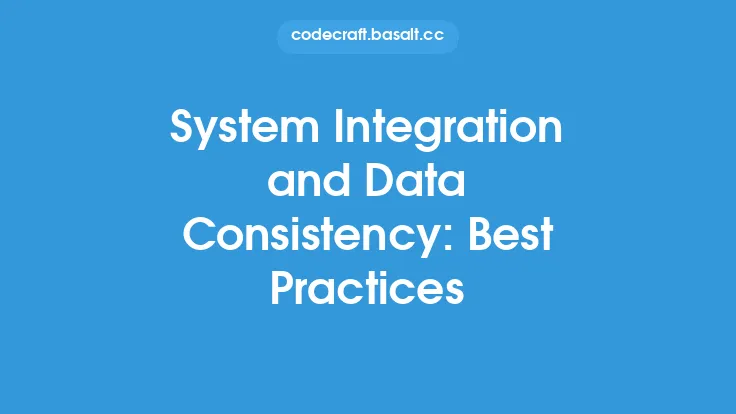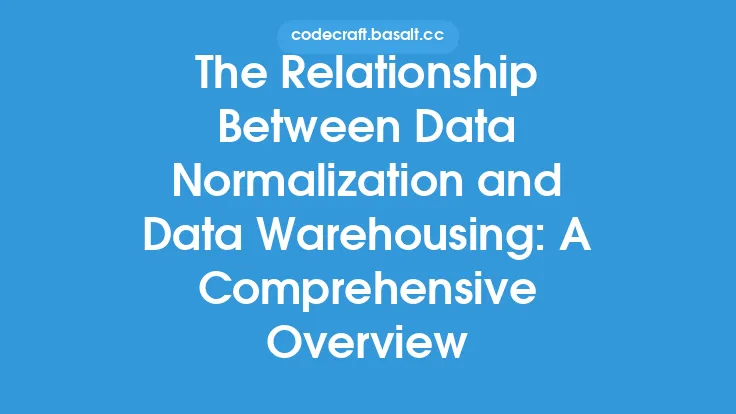In a microservices architecture, multiple services work together to provide a comprehensive solution. Each service is responsible for a specific business capability and can be developed, deployed, and scaled independently. However, this independence can lead to data consistency challenges, as each service may have its own database or data storage mechanism. Ensuring data consistency across services is crucial to maintain the integrity of the system and provide accurate information to users.
Introduction to Data Consistency in Microservices
Data consistency in microservices refers to the ability of the system to maintain a consistent view of the data across all services. This is challenging because each service may have its own database or data storage mechanism, and changes made to the data in one service may not be immediately reflected in other services. There are several types of data consistency, including strong consistency, weak consistency, and eventual consistency. Strong consistency ensures that all services have the same view of the data at all times, while weak consistency allows for temporary inconsistencies. Eventual consistency ensures that the data will eventually be consistent, but it may take some time.
Challenges of Data Consistency in Microservices
There are several challenges associated with achieving data consistency in microservices. One of the main challenges is the distributed nature of the system. Since each service is independent, it can be difficult to ensure that changes made to the data in one service are immediately reflected in other services. Another challenge is the use of different databases or data storage mechanisms by each service. This can lead to inconsistencies in the data, as different databases may have different data models or schema. Additionally, the use of caching mechanisms can also lead to data inconsistencies, as the cache may not always reflect the latest changes to the data.
Solutions for Achieving Data Consistency in Microservices
There are several solutions that can be used to achieve data consistency in microservices. One solution is to use a centralized database that all services can access. This can help to ensure that all services have a consistent view of the data. However, this approach can be limiting, as it can make it difficult to scale the system and can lead to a single point of failure. Another solution is to use event-driven architecture, where changes to the data are published as events that can be consumed by other services. This approach can help to ensure that all services have a consistent view of the data, without the need for a centralized database.
Event-Driven Architecture for Data Consistency
Event-driven architecture is a design pattern that involves publishing changes to the data as events that can be consumed by other services. This approach can help to ensure that all services have a consistent view of the data, without the need for a centralized database. When a service makes a change to the data, it publishes an event that describes the change. Other services can then consume this event and update their own data accordingly. This approach can help to ensure that all services have a consistent view of the data, and it can also help to improve the scalability and reliability of the system.
Distributed Transactions for Data Consistency
Distributed transactions are a mechanism that can be used to ensure data consistency in microservices. A distributed transaction is a transaction that involves multiple services and ensures that either all services commit the transaction or none of them do. This approach can help to ensure that the data remains consistent, even in the event of a failure. There are several protocols that can be used to implement distributed transactions, including the two-phase commit protocol and the three-phase commit protocol. These protocols involve multiple steps, including a prepare step, a commit step, and a rollback step.
Saga Pattern for Data Consistency
The saga pattern is a design pattern that can be used to implement distributed transactions in microservices. The saga pattern involves breaking down a long-running business process into a series of smaller transactions, each of which can be committed or rolled back independently. This approach can help to ensure that the data remains consistent, even in the event of a failure. The saga pattern involves several steps, including a start step, a process step, and a compensation step. The start step initiates the saga, the process step performs the actual work, and the compensation step rolls back the work in the event of a failure.
Data Replication for Data Consistency
Data replication is a mechanism that can be used to ensure data consistency in microservices. Data replication involves maintaining multiple copies of the data, each of which is updated in real-time. This approach can help to ensure that all services have a consistent view of the data, and it can also help to improve the availability and reliability of the system. There are several types of data replication, including master-slave replication, peer-to-peer replication, and multi-master replication. Each type of replication has its own advantages and disadvantages, and the choice of which one to use will depend on the specific requirements of the system.
Conflict Resolution for Data Consistency
Conflict resolution is a mechanism that can be used to resolve inconsistencies in the data. Conflict resolution involves detecting inconsistencies in the data and resolving them in a way that ensures data consistency. There are several strategies that can be used for conflict resolution, including last writer wins, first writer wins, and multi-version concurrency control. Each strategy has its own advantages and disadvantages, and the choice of which one to use will depend on the specific requirements of the system.
Best Practices for Data Consistency in Microservices
There are several best practices that can be followed to ensure data consistency in microservices. One best practice is to use a consistent data model across all services. This can help to ensure that all services have a consistent view of the data, and it can also help to improve the scalability and reliability of the system. Another best practice is to use event-driven architecture to publish changes to the data as events that can be consumed by other services. This approach can help to ensure that all services have a consistent view of the data, without the need for a centralized database. Additionally, it is also important to implement conflict resolution mechanisms to resolve inconsistencies in the data, and to use data replication to maintain multiple copies of the data.
Conclusion
In conclusion, data consistency is a critical aspect of microservices architecture. Ensuring data consistency across services is crucial to maintain the integrity of the system and provide accurate information to users. There are several challenges associated with achieving data consistency in microservices, including the distributed nature of the system, the use of different databases or data storage mechanisms, and the use of caching mechanisms. However, there are also several solutions that can be used to achieve data consistency, including event-driven architecture, distributed transactions, the saga pattern, data replication, and conflict resolution. By following best practices and using the right solutions, it is possible to ensure data consistency in microservices and build a scalable, reliable, and maintainable system.





